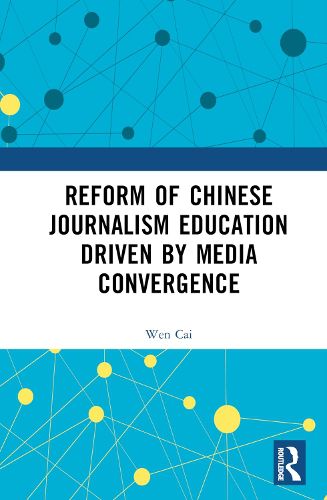Readings Newsletter
Become a Readings Member to make your shopping experience even easier.
Sign in or sign up for free!
You’re not far away from qualifying for FREE standard shipping within Australia
You’ve qualified for FREE standard shipping within Australia
The cart is loading…






This book explores the significant changes in Chinese journalism education in response to the rapid development of digital and new media technologies.
It emphasizes the need for journalism education reform to keep pace with changing times and cultivate talents with an international outlook, innovative capabilities, and professional skills. It begins by exploring the concept of media convergence and its historical development, as well as the challenges and opportunities it presents for journalism and communication education. In particular, it explains how media convergence affects the demand for journalistic talent and changes the concept of journalism education in China. The author then presents practical examples of journalism education reform in China, including innovations in talent development models, curriculum reforms, and textbook improvements. A case study of reform practices in a top journalism school in China adds depth to the discussion of educational reform and core curriculum development. The author also discusses unresolved issues in journalism education reform, such as the scale of education, the positioning of talent cultivation, and the construction of faculty teams, and proposes solutions.
The book will appeal to scholars and students of journalism education, journalism and new media, Chinese journalism, and Chinese studies.
$9.00 standard shipping within Australia
FREE standard shipping within Australia for orders over $100.00
Express & International shipping calculated at checkout
This book explores the significant changes in Chinese journalism education in response to the rapid development of digital and new media technologies.
It emphasizes the need for journalism education reform to keep pace with changing times and cultivate talents with an international outlook, innovative capabilities, and professional skills. It begins by exploring the concept of media convergence and its historical development, as well as the challenges and opportunities it presents for journalism and communication education. In particular, it explains how media convergence affects the demand for journalistic talent and changes the concept of journalism education in China. The author then presents practical examples of journalism education reform in China, including innovations in talent development models, curriculum reforms, and textbook improvements. A case study of reform practices in a top journalism school in China adds depth to the discussion of educational reform and core curriculum development. The author also discusses unresolved issues in journalism education reform, such as the scale of education, the positioning of talent cultivation, and the construction of faculty teams, and proposes solutions.
The book will appeal to scholars and students of journalism education, journalism and new media, Chinese journalism, and Chinese studies.